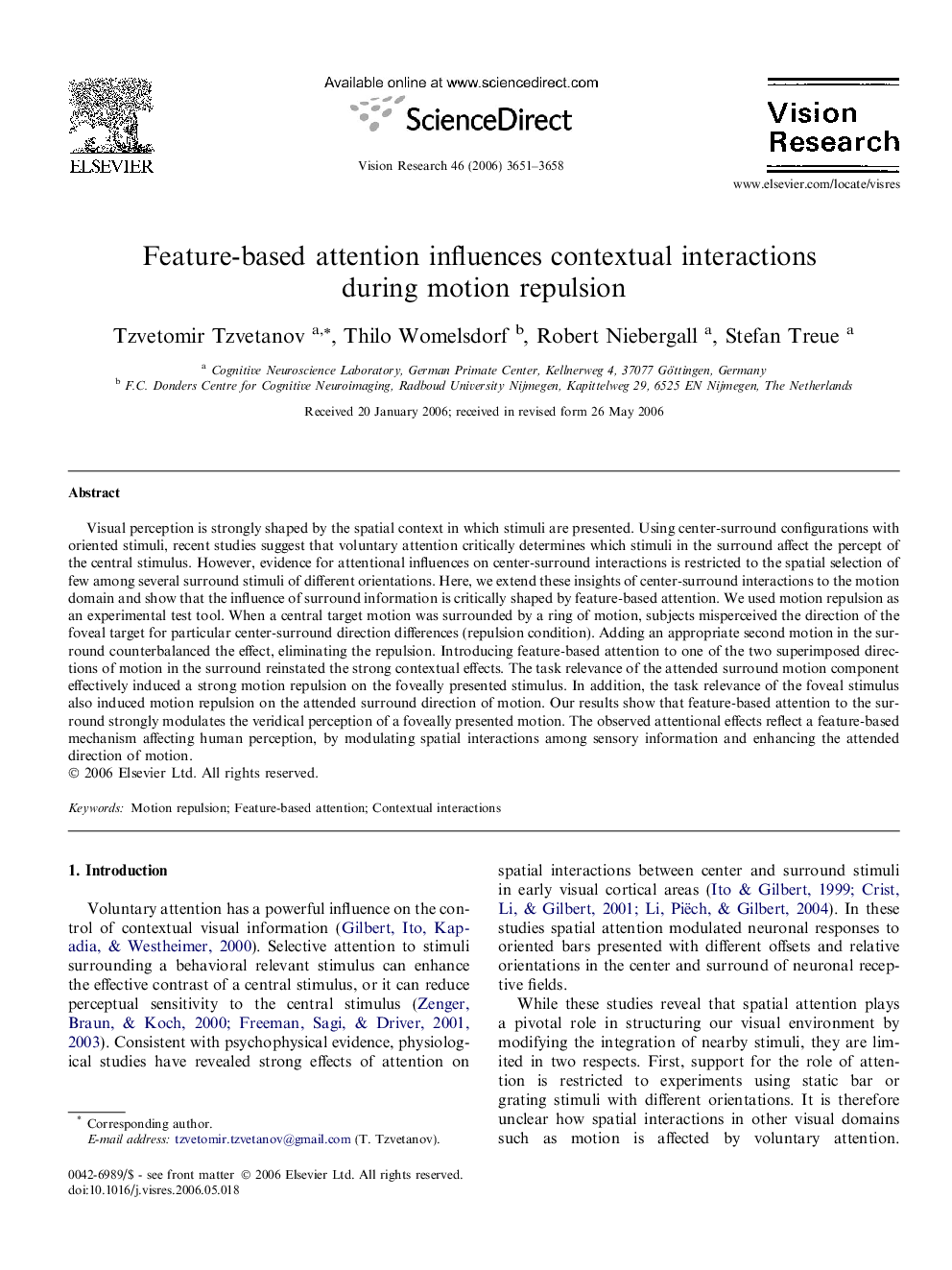| Article ID | Journal | Published Year | Pages | File Type |
|---|---|---|---|---|
| 4036588 | Vision Research | 2006 | 8 Pages |
Visual perception is strongly shaped by the spatial context in which stimuli are presented. Using center-surround configurations with oriented stimuli, recent studies suggest that voluntary attention critically determines which stimuli in the surround affect the percept of the central stimulus. However, evidence for attentional influences on center-surround interactions is restricted to the spatial selection of few among several surround stimuli of different orientations. Here, we extend these insights of center-surround interactions to the motion domain and show that the influence of surround information is critically shaped by feature-based attention. We used motion repulsion as an experimental test tool. When a central target motion was surrounded by a ring of motion, subjects misperceived the direction of the foveal target for particular center-surround direction differences (repulsion condition). Adding an appropriate second motion in the surround counterbalanced the effect, eliminating the repulsion. Introducing feature-based attention to one of the two superimposed directions of motion in the surround reinstated the strong contextual effects. The task relevance of the attended surround motion component effectively induced a strong motion repulsion on the foveally presented stimulus. In addition, the task relevance of the foveal stimulus also induced motion repulsion on the attended surround direction of motion. Our results show that feature-based attention to the surround strongly modulates the veridical perception of a foveally presented motion. The observed attentional effects reflect a feature-based mechanism affecting human perception, by modulating spatial interactions among sensory information and enhancing the attended direction of motion.
